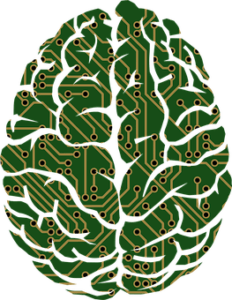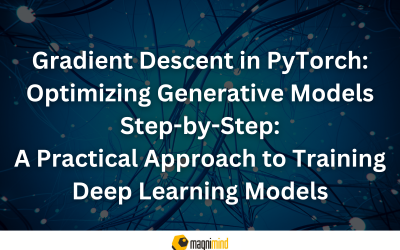You may already know that machine learning is all about developing mathematical models in order to comprehend data. Here, a diverse range of technology and tools is used to identify patterns among large datasets to improve a knowledge base or a particular process. Though the concept of machine learning isn’t new, with the emergence of big data, the technology is gaining a huge momentum these days.
Machine Learning and Data
Before we delve into the title topic, let’s have a quick look at why machine learning cannot exist without data. Machine learning essentially refers to a large set of algorithms that can solve a certain set of problems, when trained properly. The models work best only when large amounts of data are available.
The more facets are covered by the data, the faster will the algorithms be able to learn and can fine-tune their predictive analyses. With an adequate amount of quality data available, machine learning techniques can easily outperform traditional approaches.
Where does the problem lie?
Despite the present abundance of data, it turns out that a large percentage of those collections aren’t so much useful. Either they’re partially or poorly labeled, or are too small of a collection, or they just don’t meet the needs of businesses. And this is exactly where the importance of a data workflow comes into the picture for the success of machine learning models.
What’s a machine learning model?
Put simply, a machine learning model is a piece of code, which is made smart by a data scientist by training it with data. If the model is provided with garbage, it’ll give garbage in return, which means even the trained model will provide wrong or false predictions if the input data isn’t of any value.
Data workflows for machine learning projects
Data workflows of a machine learning project are quite varied and can be distributed in three major steps.
- Data gathering
- Preparing data
- Exploratory data analysis (EDA)
Now, we’re going to discuss each of these steps in detail.
Data gathering
The process of gathering data starts with defining the problem. You’d need to have the fundamental understanding of the problem that you’re trying to solve so that you can identify the requirements and the probable solutions.
For example, if you’re trying to make a machine learning project that utilizes real-time data, you’ll be able to develop an IoT system that uses different data sensors. The initial datasets can be collected from different sources like a database, file, sensors and more.
The important thing to note is that you cannot use the collected data directly for the machine learning model to make it perform the analysis process. The main reason is that there may be a lot of unorganized text data, missing data, or extremely large values. So, you’d need to prepare the data to make it usable for the model, which is the second step of data workflow for machine learning.
Data preparation
The success of a machine learning model greatly relies on this step. Data preparation refers to the process of cleaning the raw data. Since the data is captured in the real world, this step involves getting it properly cleaned and formatted.
Put simply, whenever data is captured from different sources, it’s gathered in a raw format, which cannot be used for the analysis and for training the model. Data preparation involves certain key steps. Before we discuss the steps, let’s have a look at different types of data that are captured.
- Inconsistent data: Duplication of data or data may be captured because of human errors.
- Noisy data: This can happen due to some technical problem of the device during the collection of data or because of human errors.
- Missing data: This is found when it isn’t continuously created or there’re some technical issues in the application.
Here’re some of the fundamental techniques that are used in this step of data workflow for a machine learning project.
- Machine learning models are only capable of handling numeric features; thus ordinal and categorical data has to be converted into numeric features.
- When missing data is encountered in a dataset, the column or row of data is generally removed based on the need of the model. However, if there’re lots of missing values in a dataset, this technique shouldn’t be performed.
- In the event of encountering missing data in a dataset, the missing part is often manually filled. The mean, median or the highest frequency value is most commonly used.
Data preparation is the key step of data workflow to make a machine learning model capable of combining data captured from many different sources and providing meaningful business insights.
Getting good at data preparation is a challenge to those working with data. Here’re some of the best practices to prepare the data effectively.
- It’s easy to dive into preparing data without thinking about the source of the data and the reliability of that source. Often, the quality, format, and accessibility of the data source play a big role in the analytics. Data sourcing can be broken down into three parts namely defining the data required for a business task, identifying potential sources of the data, and confirming the data source.
- Data profiling plays a crucial role in data preparation. It’s used to decide if a data source is even worth including in a machine learning
- In this age of abundant data, preparing large datasets can be time-consuming and cumbersome. So, it’s recommended to start with a random sample of the data for data preparation. Creating data preparation rules on a valid sample of the data will greatly expedite the time-to-insight.
- Based on the knowledge of the business analytics goal, different data cleansing strategies should be experimented upon to get the relevant data. Here again, a statistically-valid, small sample should be used to start with the experimentation.
Data preparation may seem to be messy but it’s ultimately a valuable and rewarding exercise. Guided by solid data governance principles and armed with profiling tools, sampling techniques, visualization etc, data workers can develop effective data preparation approaches.
Exploratory data analysis (EDA)
Exploratory data analysis is a crucial step in any data analysis process. In this data workflow step, the contents of a dataset are understood and summarized by data workers, typically with a specific question. This is done by taking a broad look at trends, patterns, unexpected results, outliers and so on in the existing data. Here, quantitative and visual methods are used to highlight the story that the data is telling.
Let’s have a look at how exploratory data analysis helps data workers.
- Identifying errors that have been made at the time of data collection and missing data areas.
- Identifying the most influential variables in a dataset.
- Mapping out the underlying structure of that data.
- Listing and highlighting outliers and anomalies.
- Estimating parameters, defining margins of error, or determining confidence intervals.
- Testing previously proposed hypotheses.
The key purpose of EDA is to examine the dataset while eliminating any assumption about what it may contain. By eliminating assumptions, data workers can identify potential causes and patterns for observed behaviors. Any of the two types of assumptions are made about raw datasets by the analysts – business assumptions and technical assumptions.
Business assumptions can often remain unrecognized and can impact the business problem without the researcher being aware of them consciously. Technical assumptions can be like no data is anyway corrupted in a dataset or no data is missing from it, which have to be correct so that the insights gained from statistical analysis prove to be true later.
Other stages in a machine learning model
The main goal of using the above data workflow steps is to train the highest performing model possible, with the help of the pre-processed data. The types of methods used to cater to this purpose include supervised learning and unsupervised learning.
In the former, the machine learning model is provided with data that is labeled. In unsupervised learning, the model is provided with uncategorized, unlabeled data and the algorithms of the system act on that data without prior training.
Next comes the evaluation stage, which is an integral part of a machine learning model development process. It helps data workers find the best model that represents the data and evaluate how well that model will perform in the future.
Final takeaway
So, we learned about the data workflows for a machine learning model and discussed various steps in order to understand the topic better. It’s important to remember that a machine learning model is only as good as the data it’s provided with and the ability of the algorithms to consume it.
In data science, one of the most important skills is the ability to assess machine learning. In the field of data science, there isn’t any shortage of techniques to perform a wide range of high-end tasks. However, what it probably does lack is how to solve non-standard business problems and this is where machine learning techniques fit in the picture perfectly.












